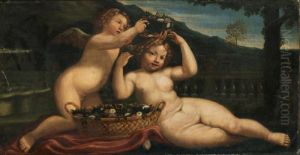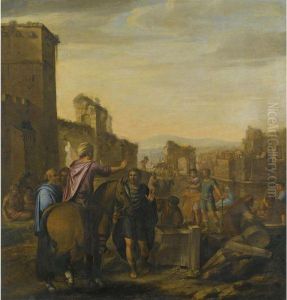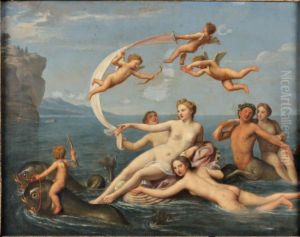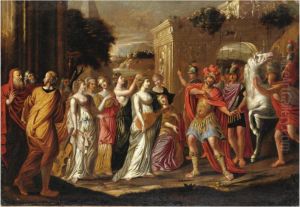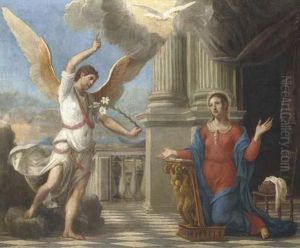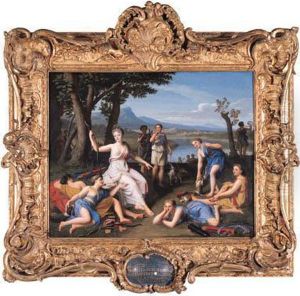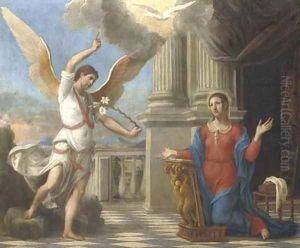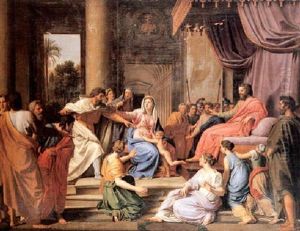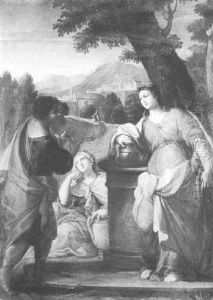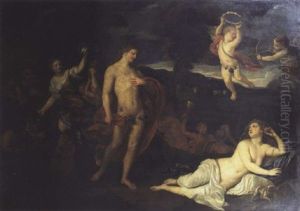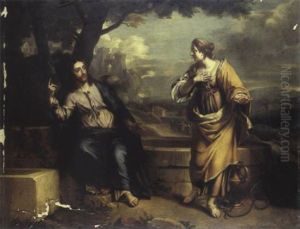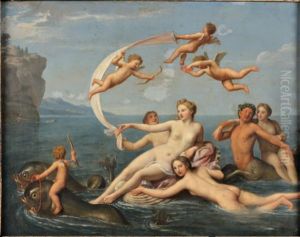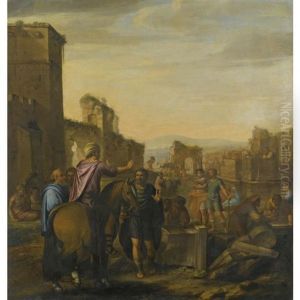Nicolas Colombel Paintings
Nicolas Colombel was a French painter born in 1644 in Sotteville-lès-Rouen, Normandy. His early life and education in art remain somewhat obscure, but it is known that he moved to Paris to pursue his painting career. Colombel's style was deeply influenced by the classical baroque traditions, and he is often associated with the French classical baroque movement, which emphasized clarity, order, and balance in art.
In the late 1660s, Colombel traveled to Italy, as was customary for many European artists seeking to refine their skills and study the Renaissance masters. During his stay in Rome, he was particularly influenced by the works of Nicolas Poussin, a fellow Frenchman who had made a significant impact on the Roman art scene. Colombel's admiration for Poussin is evident in his precise drawing, clear composition, and the serene mood of his paintings. He spent a considerable amount of time in Italy, which was pivotal in the development of his style and approach to painting.
Upon returning to France, Colombel enjoyed a successful career. He was received into the Académie Royale de Peinture et de Sculpture in 1676, which was a testament to his skill and the respect he had garnered in the art community. His works were sought after by the French aristocracy and religious institutions, for whom he completed several significant commissions. Colombel's paintings often depicted religious and mythological themes, executed with a meticulous attention to detail and a harmonious color palette.
Despite his success, Colombel is not as well-remembered as some of his contemporaries. This is partly due to the overshadowing prominence of other artists at the time and the evolving tastes in art that began to favor the Rococo style. However, his contribution to the French classical baroque movement and his influence in bridging the Italian and French art scenes of the period remain notable.
Nicolas Colombel passed away in 1717. Today, his work can be found in various museums and collections, where it continues to be appreciated for its classical beauty and serene elegance. Colombel's legacy, while subtle, is an important reminder of the diversity and depth of talent in 17th-century French painting.

